White Christmas: Chardonnay with Authority Two Top Domaines With Enviable Holdings in Chablis Premier Cru Pack (6-Bottle $349) + Grand Cru Pack (5-Bottle $576) + Grand, Premier, Village Pack (5-Bottle $399)
The elegance and finesse of Chablis with its unparalleled combination of lively fruit and mineral-driven crispness make it an ideal counterpoint for the rich, often fatty fare that tends to grace most holiday tables. Count the fish in an Italian Christmas Eve’s ‘Festa dei Sette Pesci’ and you’ll find a unique Chablis for each of them, and from a Christmas ham to the brisket and latkes that show up on many Hanukkah sideboards, Chablis has the weight and pedigree of tradition graced with price points to suit all budgets. Not only that, but the crystalline purity of the wine is, in many ways, symbolic of the winter season itself.
The three packages offered here provide a cross-section of some of the finest terroirs in Chablis; named climats from two of the region’s most reliable producers, Domaine Long-Depaquit and Domaine Laroche. Both estates combine experience, tradition and a firm commitment to land stewardship, ensuring a sustainable future in an era of changing climate. Whether you celebrate the twelve days of Christmas or the eight days of Hanukkah, or any holiday permutation in between, there is a Chablis to suit your mood.
What Lies Beneath
“The vineyards of Chablis have a single religion,” writes Jacques Fanet in his book ‘Les Terroirs du Vin’: “Kimmeridgian.”
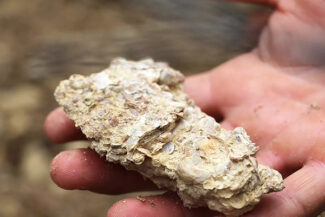
Kimmeridgian limestone marl – courtesy of The Source
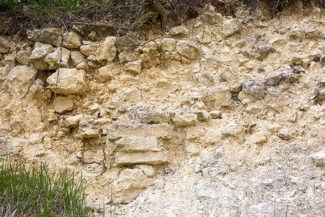
Soil in Chablis; big chunks of Portlandian limestone on top with soft Kimmeridian limestone marls underneath.
In the middle of the 18th century, a French geologist working in the south of England identified and named two distinct types of limestone from the Jurassic Era; Portlandian, which he found in Dorset with a layer of dark marl just below it, subsequently named after the nearby village of Kimmeridge. These strata also run across the Channel and through the north of France, where they become a part of the ‘Paris Basin’ and play an indispensable role in creating the soils. A slow geological tilting of this basin allowed the Seine, Aube, Yonne, and Loire rivers to cut through the rising ridges and form an archipelago of wine areas in Champagne, the Loire Valley and ultimately, Burgundy.
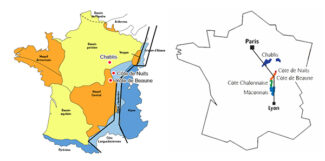
Chablis remains the biggest island in the Kimmeridgian chain and it is home to some of the finest Chardonnay terroirs found on earth. The defined region ‘Chablis’ was recognized in 1923 by the Wine Tribunals as requiring a sub-soil of Kimmeridgian limestone while wine grown anywhere else in Chablis would be classed Petit Chablis. The Grand Cru mid-slope in Chablis maps almost perfectly to the Kimmeridgian outcrop, with the soft, carbonate-rich mud rock capped by Portlandian Barrios limestone and supported by Calcares à Astarte, yet another type of limestone.
And now for the interesting part: As vital as Kimmeridgian soil is to the top Cru classifications in Chablis, it is not the primary consideration. Geologic conditions identical to those experienced by the Grand Cru slope extend both northeast and southwest, but the vineyards on those sites are classed as Premier Crus. As a matter of fact, the reference to Kimmeridgian limestone in the definition of Chablis was discontinued in 1976, a tacit admission that slope and orientation are of even greater importance to wine quality.
Chardonnay in Chablis: Acid Trip
Acidity in wine must be handled with the same circumspection as in the laboratory—make a wrong move and you end up with a wincing sting; in either case, it’s a fail. Balance is the key in all things wine, but clearly, wines from more northerly regions face a bigger struggle in balancing ripeness with sharpness, and Chardonnay is the poster-child varietal for ‘If life hands you lemons, make Chablis.’
The line between refreshing tension and acid reflux may be fine, and one reason that aging Chablis has always been a requirement in Cru versions is that time soften acids and allows the briny, saline-driven savoriness to blossom. Nearly all Chablis undergoes secondary malic fermentation prior to bottling, a technique that transforms malic acid into softer lactic acid and provides a more stable environment. Most Premier and Grand Cru Chablis also see time in neutral oak to further the mellowing process before facing the catwalk of consumption.
2020 Vintage: Superb Harvest with Outstanding Aging Potential
In 2020, the problem for Chablis was not reining in grape acid, but retaining it. Like much of Western Europe, Chablis experienced the warmest 12 months on record, warmer even than 2003. This meant an early start to the 2020 growing season and, while there were outbreaks of frost, the damage remained minor, particularly when compared to 2021.
According to Domaine Long-Depaquit’s Matthieu Mangenot, “2020 was a very easy vintage to manage. With a 40% reduction in rainfall and over 300 hours more sunshine than average, there were next to no disease issues in the vineyard. The dry weather even retarded weed outbreaks and this meant little to no spraying was required.”
One of the surprises that has emerged from persistent summer heatwaves brought about by a changing climate is a somewhat unique ability for Chardonnay to adapt without losing its sense of place. 2020 is a case in point, according to Mangenot: “Despite the heat and dryness, the alcohol levels are normal, the acidity levels are exceptional and the overall balance on the palate means the wines are representative of an excellent vintage for the region.”
Domaine Long-Depaquit
At more than 150 acres, Long-Depaquit is one of the largest domains in Chablis, renowned and respected not only for its sprawling terroir but for a commitment to low-intervention, organic farming. In 2014, upon completion of a new winery, the estate has focused on quality improvements centered on earth-friendly approach; in 2019, the property was awarded the highest Level 3 Haute Valeur Environmentale certification.
Beaune-based négociant Albéric Bichot has managed Long-Depaquit since 1967, and the current winemaker, Matthieu Mangenot, joined in 2007, after dual training as an agronomist and an oenologist in South Africa, Lebanon, Bordeaux and especially, Mâconnais and Beaujolais. He has spearheaded the domain’s comprehensive approach to authenticity and sustainability.
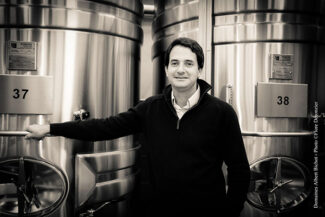
Matthieu Mangenot
Long-Depaquit produces around 180,000 bottles of Chablis each year, and like most large estates in the region, the lion’s share is village wine fermented and aged in 100% stainless-steel tanks. Wine from their six Premier Cru sites and six Grand Cru sites wines see a small percentage fermented and aged in barrels between two and five years old; Grand Cru Les Clos typically sees a higher percentage (25 to 35%) of oak.
Their flagship cuvée is Grand Cru La Moutonne, drawn from a 5.8 acre monopole vineyard that straddles two Grand Crus (95% in Vaudésir and 5% in Les Preuses) in a steep amphitheater capable of producing some of the richest, most complex wines in Chablis.
The Premier Crus: Structure With Good Length
Domaine Long-Depaquit Premier Cru Package: Six Bottles for $349
Longevity is not only a hallmark of this appellation’s palate sensation: more than half of the climats entitled to wear the ‘Premier Cru’ label had their present-day names by 1429. Chablis Premier Cru represents about 14% of Chablis production, with sites scattered on either side of the Serein River and covering around 2000 acres. As in Bordeaux, where the location of the vineyard compared to the Dordogne and the Garonne determines the style and quality of the wine, the case is similar in Chablis, where left bank wines tend to be more floral and fruit-centered whereas right bank wines are steely and mineral-focused.
Further illuminating the subject is Marc-Emmanuel Cyrot of Domaine Millet, who observes, “The right bank provides complex, well-balanced wines, with a maximum of minerality and vivacity. Those on the left bank are very aromatic, with a less full-bodied character.”
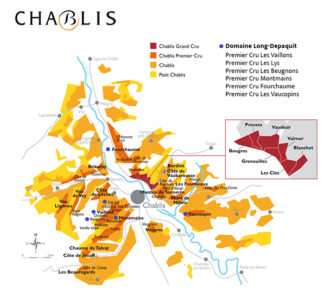
Again, as in Bordeaux, this is the result of soil, topography and exposure to the sun: On the right bank, close to the village, many of the well-known Premier Crus share similar geology, exposition and characteristics with the Grand Crus. To the left of the river, a different style emerges, with many steep-sided vineyards oriented southwest-northeast, east-facing slopes and varying ratios of limestone and clay.
Of the 40 vineyards that fall under the Premier Cru category, 17 are reckoned to be superior, or ‘flag-bearing’ climats. Among these 17, vineyard differences are pronounced and subtle, but with age, the individualism of the respective climats becomes even more apparent.
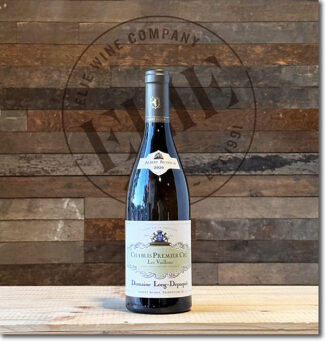 Domaine Long-Depaquit, 2020 Chablis Premier Cru Les Vaillons ($52)
Domaine Long-Depaquit, 2020 Chablis Premier Cru Les Vaillons ($52)
Found in a valley to the southwest of Chablis on the western side of the Serein river, a southeasterly face and high-quality Kimmeridgian soils below meld to make this large climat a sought-after location. At 318 acres, the Vaillons vineyard is made up of eight, smaller climats, all Premier Crus in their own right.
Tensile and incisive, the wine displays classic aromas of crisp green apple, citrus zest, white flowers and oyster shell with racy acids and loads of depth at the core.
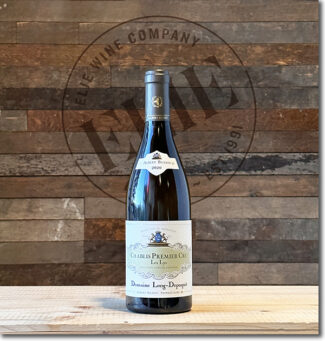 Domaine Long-Depaquit, 2020 Chablis Premier Cru Les Lys ($61)
Domaine Long-Depaquit, 2020 Chablis Premier Cru Les Lys ($61)
Les Lys is a Premier Cru climat within the larger, umbrella Premier Cru vineyard of Vaillons. While contiguous with the latter, Les Lys has a unique aspect, bordering Séchets but facing northeast over the town of Chablis towards the Chablis Grand Cru vineyards; the rest of the Vaillons climats face generally southeast.
A textbook example of how brightly Premier Cru Chablis can shine; grilled pineapple and yellow apple on the nose with a palate of salt-preserved lemon, crushed hazelnut and fruitcake spices.
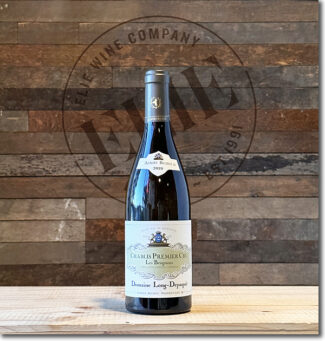 Domaine Long-Depaquit, 2020 Chablis Premier Cru Les Beugnons ($56)
Domaine Long-Depaquit, 2020 Chablis Premier Cru Les Beugnons ($56)
Les Beugnons is located at the western extremity of the Valvan valley on the left bank of the Serein River, where the favorable exposure is very favorable for creating expressive and charming wines.
Rich aromatics of pear peel, slight smoke, yeasty lees and candied lemon following through with a juicy palate reminisicent of ripe Mirabelle and a touch of honey.
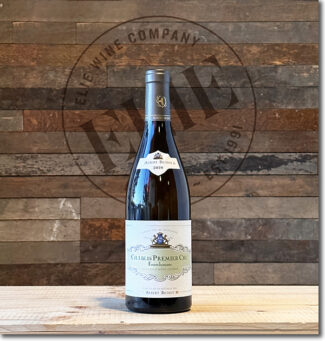 Domaine Long-Depaquit, 2020 Chablis Premier Cru Fourchaume ($57)
Domaine Long-Depaquit, 2020 Chablis Premier Cru Fourchaume ($57)
Fourchaume is one of Chablis flagship climats. At 326 acres, it sprawls along the eastern banks of the Serein river where a favorable south-to-southwesterly aspect and high-quality limestone soils beget a distinctive wine with rounded citrus flavors underwritten by fresh minerality.
A crystalline, full-bodied, mineral Chablis with buttery rich notes of ripe apple and sunny Meyer lemon. Tautly-structured with a bracing acidity and a lingering finish.
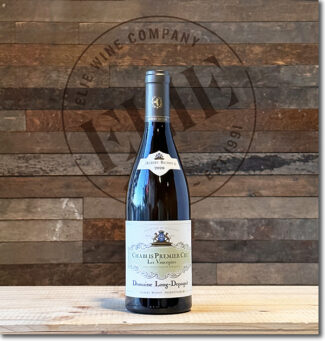 Domaine Long-Depaquit, 2020 Chablis Premier Cru Les Vaucopins ($62)
Domaine Long-Depaquit, 2020 Chablis Premier Cru Les Vaucopins ($62)
Les Vaucopins is found on the right bank of the Serein River in the commune of Chichée, five miles east of Chablis. Its terroir has an uncanny resemblance to the Grand Crus, with southern exposure, steep slopes and numerous Kimmeridgian outcrops.
An elegant and refined wine that displays milk caramel notes behind nuances of oak, there is a hint of sweetness on the palate with flavors of candied fruit, apricot, and quince.
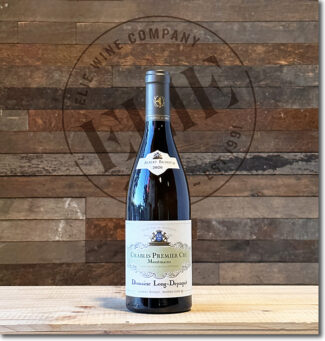 Domaine Long-Depaquit, 2020 Chablis Premier Cru Montmains ($61)
Domaine Long-Depaquit, 2020 Chablis Premier Cru Montmains ($61)
Another flag-bearing climat, Montmains also encompasses the climats of Butteaux and Forêts to cover approximately 300 acres. With a long, narrow southeast and northeast exposure, Montmains sees early morning sun, but is somewhat colder than nearby climats and usually sees a later harvest.
Lively, chalky, pure and accessible with white pepper, stone and some aniseed with a tight, linear focus, the wine is taut and refined with a wonderful finish.
The Grand Crus: Keeping Potential
Domaine Long-Depaquit Grand Cru Package: Five Bottles for $576
The ne plus ultra in the region, Chablis Grand Cru, represents only about 1% of total Chablis production; it is comprised of seven climats within the commune of Chablis itself and in the hamlets of Fyé and Poinchy on the right bank of the Serein River, which runs to the northeast of the village of Chablis. The names of the vineyards (Blanchot, Bougros, Les Clos, Grenouilles, Preuses, Valmur and Vaudésir) feature prominently on labels due to the distinct characteristics of each, and are found at elevations between 325 and 825 feet for a total of about 250 acres.
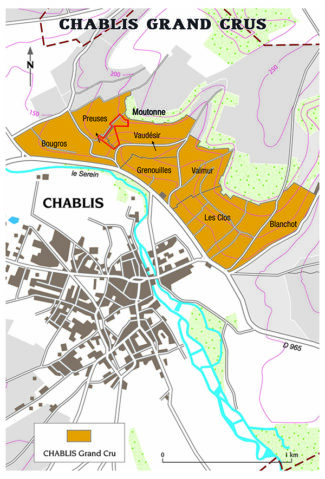
The signature of a Grand Cru Chablis is the perfect balance of fruit-based fattiness and bracing acidity; it is a refreshingly dry wine with nuances based on the individual vineyard, but the common notes to expect include the elusive scent of freshly-sliced mushrooms and a discreet touch of honey. Most impressive in a wine with limited exposure to the preservative qualities of oak is its ability to age and improve, ten years minimum with fifteen years or more well in the realm of possibility. With maturity, the earthiness and nutty-qualities of Grand Cru Chablis increase as forward citrus fruit fades and an intriguing spiciness takes over.
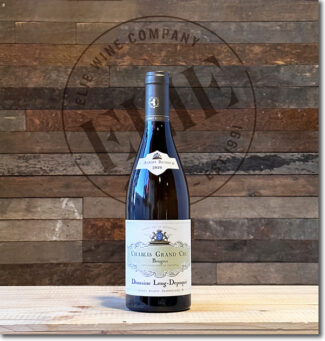 Domaine Long-Depaquit, 2020 Chablis Grand Cru Bougros ($102)
Domaine Long-Depaquit, 2020 Chablis Grand Cru Bougros ($102)
Bougros is located at the northwestern edge of the Grand Cru hillside; it covers nearly 39 acres of slop on the Right Bank of the Serein and tends to produce wines that are considered, rounded and less austere in youth than those from the other Grand Cru climats.
Silky and expressive, the wine offers brioche, toast and ripe green apple with petrol, dried peach and shellfish nuances.
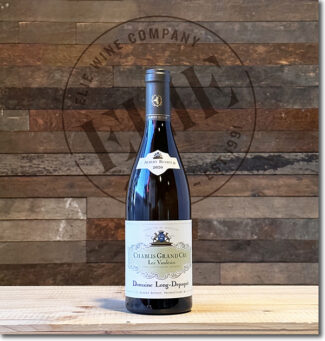 Domaine Long-Depaquit, 2020 Chablis Grand Cru Les Vaudésirs ($127)
Domaine Long-Depaquit, 2020 Chablis Grand Cru Les Vaudésirs ($127)
At the heart of the Grand Cru area, the Vallée des Vaudésirs is a textbook example of the geology and history of Chablis, bearing witness to the erosion that followed the last ice age. Long-Depaquit’s vineyard is more than forty years old, planted in the ‘endroit des Vaudésirs’, where, beneath steady sunshine, Kimmeridgian outcrops are the most numerous.
The wine’s bouquet is redolent of citrus fruit and delicate lily and chamomile notes while the palate offers green apple notes, hint of white peach and a hint of coastal herbs.
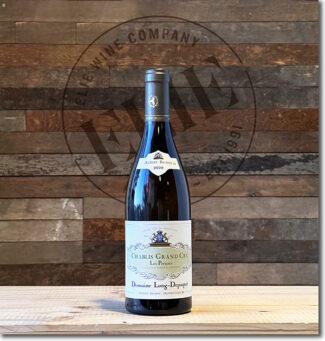 Domaine Long-Depaquit, 2020 Chablis Grand Cru Les Preuses ($110)
Domaine Long-Depaquit, 2020 Chablis Grand Cru Les Preuses ($110)
The 29-acre Preuses slopes continue from those of the Bougros climat at the bottom of the hill, becoming increasingly steep toward the top. At the northern end of the Grand Cru slope, the Kimmeridgian soils and a sunny aspect make for an excellent terroir, but the wines tend to be rich and elegant, if less aromatic than other Chablis Grand Cru wines.
The wine is steely and rich with a gunflint character behind softer floral tones and hazelnut notes.
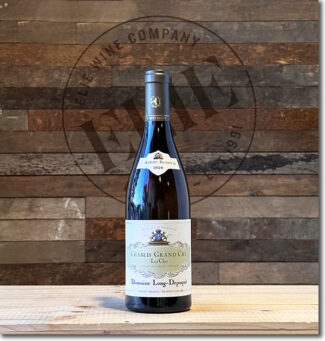 Domaine Long-Depaquit, 2020 Chablis Grand Cru Les Clos ($127)
Domaine Long-Depaquit, 2020 Chablis Grand Cru Les Clos ($127)
At 65 acres, Les Clos is by far the biggest Grand Cru climat in Chablis. Its southwest exposure, offering perfect sun, combines with a relatively steep slope to provide optimal ripening conditions. Because of its size, Les Clos’ soil is multi-faceted: towards the top, stones and limestone become more prevalent, whereas towards the bottom, on the contrary, it gets deeper with more clay.
The wine blends two plots and reflects the specificity—the bouquet combines floral notes from the higher of the two plots with almond and hazelnut notes from the mid-slope vineyard.
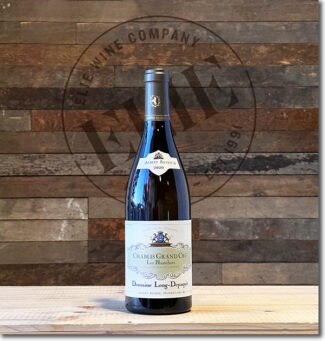 Domaine Long-Depaquit, 2020 Chablis Grand Cru Les Blanchots ($110)
Domaine Long-Depaquit, 2020 Chablis Grand Cru Les Blanchots ($110)
Blanchots provides a unique soil composition, combining typical Chablis Kimmeridgian limestone with ammonites and a layer of white clay. Blanchots takes its name from this white clay. which retains moisture and protects the vines from hydric stress.
The wine shows a floral nose dominated by lilies and white roses; the ample mouth is generous with citrus and stone fruit, leading to mineral fish with hints of flint and graphite.
Chardonnay Finds Valhalla
When the Burgundian wine trade refers to a ‘monopole’, it refers to a single defined vineyard area responsible for the production of a single label from a particular producer. La Moutonne is one such vineyard, six acres in size and lying mostly within the Vaudésir Grand Cru, but with a small protrusion into Les Preuses. Owned entirely by Domaine Long-Depaquit, itself owned by Domaines Albéric Bichot, Moutonne faces predominantly south, although with the gentle curve of the hillside, some of the vines face to the southeast. Coupled with a relatively steep gradient that increases sunlight exposure and drainage, the vineyard enjoys a warmer mesoclimate than vineyards lower down the slope.
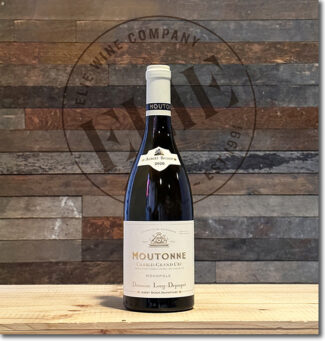 Domaine Long-Depaquit, 2020 Chablis Grand Cru Moutonne ‘Monopole’ ($229)
Domaine Long-Depaquit, 2020 Chablis Grand Cru Moutonne ‘Monopole’ ($229)
25% of this wine sees neutral oak for ten months, then final ageing in stainless steel vats for six months on fine lees. The nose is fleshy with peach and nectarine, with discreet notes of jasmine and violet. Full-bodied and generous with the distinct marly minerality that reflects the micro-terroir, the palate maintains freshness and lightness despite the complexity.
Domaine Laroche
From its headquarters at the Obédiencerie of Chablis, Laroche celebrates a heritage dating back to the Middle Ages, when the Canons of St. Martin of Tours were making wine. St. Martin’s relics were hidden in the Obédiencerie for a decade and Domaine Laroche still produces and ages its Premier and Grand Crus in these historical cellars.
At well over two hundred acres situated among the top vineyards in Chablis, the estate’s approach to maintaining terroir specificity is unique: Under the direction of Grégory Viennois, the winemaking team designate one team member to each plot who is wholly responsible for the management of that vineyard from pruning and health of the soil to the quality and quantity of fruit yields. According to Viennois, “We tend to be fatalists. If the weather and the climate are not with us, we can do very little, so we have learned to work with the weather. We have rainfall and steep slopes, and this defines our terroir and wine.”

Grégory Viennois
The heralded star in the Laroche portfolio is cuvée Reserve de L’Obédience, which draws the best fruit of the Les Blanchots Grand Cru. The pinnacle of Laroche holdings, Les Blanchots provides a unique terroir made of a layer of white clay on Kimmeridgian limestone with ammonites—an ideal admixture that maintains the optimal amount of water for deep root development. Combined with a southeast exposure, this allows for slow ripening and gradual aroma development slowly, just as the wine requires about five years to fully express itself.
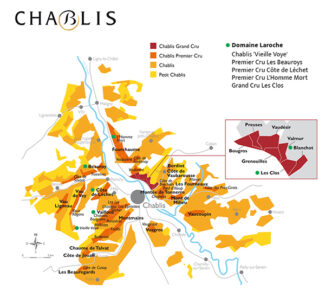
Domaine Laroche Grand, Premier and Village Package: Five Bottles for $399
A cross-section of quality from the most consecrated terroirs of Chablis, this package represents a challenge of nuance: Each bottle, though 100% Chardonnay, reflects its place of origin, and learning to identify a wine from the specific spot where it is grown in one of the great achievements of wine appreciation.
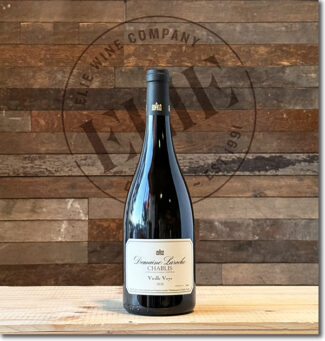 Domaine Laroche ‘Vieille Voye’, 2020 Chablis ($42)
Domaine Laroche ‘Vieille Voye’, 2020 Chablis ($42)
Vieille Voye is a Left Bank vineyard located beneath the Premier Cru site ‘Les Vaillons’ where the vines are more than seventy years old. Although it is not classified as a Premier Cru, Laroche treats Vieille Voye as though it was, hand- harvesting and sorting the grapes in the winery before extended aging in French oak foudres.
The wine’s textured nose provides fresh green-apple peel and bright, ripe lemon, adding freshness to a taut and concentrated palate with beautiful limestone depth.
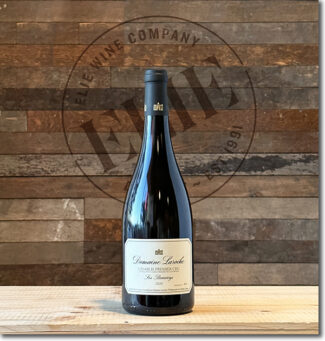 Domaine Laroche, 2020 Chablis Premier Cru Les Beauroys ($65)
Domaine Laroche, 2020 Chablis Premier Cru Les Beauroys ($65)
Les Beauroys lies on the left bank of the Serein, and produces wines that are most often described as ‘charming’. It is among the earliest vineyards in Chablis to ripen and is known for being delightfully accessible in its youth.
The wine shows a delicate nose that combines anise with candied orange peel and leads to a pithy palate driven by citrus and salinity.
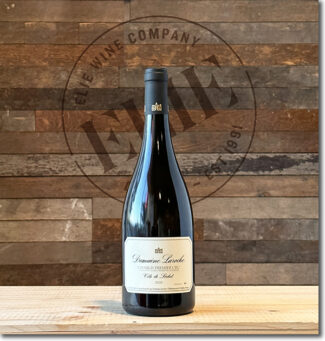 Domaine Laroche, 2020 Chablis Premier Cru Côte de Léchet ($68)
Domaine Laroche, 2020 Chablis Premier Cru Côte de Léchet ($68)
The Côte de Lechet vineyard lies just above the small village of Milly on the western side of the river. A southeasterly aspect gives it exposure to the less intense morning sun, in contrast to the more sunset-facing slopes on the other side of the valley. This encourages slower ripening in an already cool climate, and ensures that the acidity that typifies the region’s wines flourishes.
Elegant and floral with spicy undertones, the wine demonstrates a profound minerality that lingers through to the finish and adds complexity to the gentle acidity.
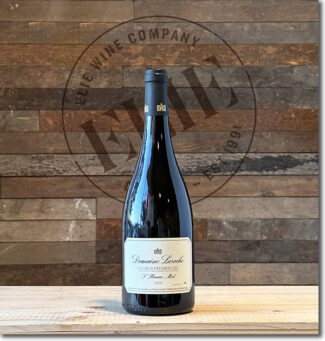 Domaine Laroche, 2020 Chablis Premier Cru L’Homme Mort ($78)
Domaine Laroche, 2020 Chablis Premier Cru L’Homme Mort ($78)
L’Homme Mort is one of the most northerly Premier Crus in Chablis, located within the larger Fourchaume Premier Cru just south of the town of Maligny. Wines made in this oddly-named (The Dead Man), 17-acre climat share the softer, more rounded characters that are synonymous with Fourchaume while also possessing a distinctive zingy minerality.
The nose shows classic notes of minerals, citrus, brioche and stone fruits with a textured and balanced mouthfeel with saline tinges and bracing acidity.
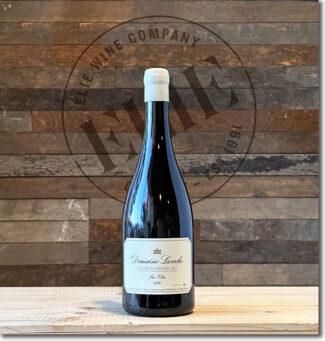 Domaine Laroche, 2020 Chablis Grand Cru Les Clos ($149)
Domaine Laroche, 2020 Chablis Grand Cru Les Clos ($149)
The superb 66-acre Les Clos vineyard is situated at the southern end of the Grand Cru slope between the similarly revered Valmur climat to the north and the perhaps less-famous, generally south-facing Blanchots site on the south side of the hill. The wines from this plot are associated with ripe stone fruit, orange peel and honey with a tendency to be more closed in their youth and famous for their long-term aging potential.
An intense lime-scented bouquet flanked by orange blossom and pressed white flowers introduces a well-balanced palate with a honeyed mouthfeel and notes of almond and spice.
The Pinnacle
Gilding the Lily 101: We know what to do when life hands us lemons, but when the vineyard hands us Grand Cru crop, the options are interesting. Technical director Grégory Viennois explains the steps involved in creating the Laroche pinnacle, ‘La Réserve de l’Obédience’:
“The grapes are hand-harvested in Grand Cru Les Blanchots and collected in small crates to go to the winery, where they are sorted. Then, each parcel is kept apart in order to do the entire winemaking process separately. Blending of the best wines from Grand Cru Les Blanchots takes place at the beginning of the summer every year—samples are taken from each vat, cask and barrel and are then tasted and selected for their delicacy and silky outlines. The aim is to express in the glass the typicity of the terroir as faithfully as possible. We try to get nearer to the perfect wine if it exists: refined, intense, mineral and capable of maturing for at least twenty years.”
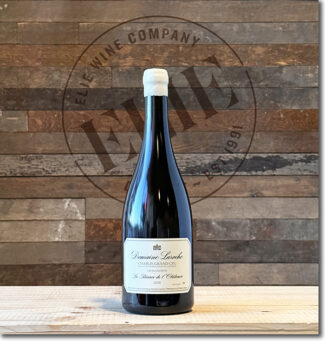 Domaine Laroche ‘La Réserve de l’Obédience’, 2020 Chablis Grand Cru Les Blanchots ($221)
Domaine Laroche ‘La Réserve de l’Obédience’, 2020 Chablis Grand Cru Les Blanchots ($221)
Regardless of vintage La Réserve de l’Obédience is a delicate and subtle wine that showcases a markedly different style in its youth than in its maturity. Up to five years, the white fruit aromas, the mineral-driven finish and the extraordinary freshness remain front and center. With a few more cellar years, the inherent richness of terroir is expressed at its best and the soft spices and acacia honey notes, still supported by the freshness, emerge to center stage.
Domaine Laroche ‘La Réserve de l’Obédience’, 2019 Chablis Grand Cru Les Blanchots ($221)
Up front, notes of elderflower, vanilla and apple aromas and flavors converge. There is gobs of mid-palate richness above vivid acidity. Within a few years, look for the emergence of exotic aromas of petrol, quinine and pear scents to precede the appealing and concentrated minerality.
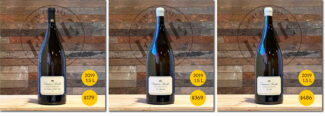
Chablis Premier Cru Les Vaillons ‘’Vieilles Vignes’ ($179)
Chablis Grand Cru Les Blanchots ($369)
Chablis Grand Cru Les Clos ($486)
- - -
Posted on 2022.12.17 in Chablis, France, Wine-Aid Packages
Featured Wines
- Notebook: A’Boudt Town
- Saturday Sips Wines
- Saturday Sips Review Club
- The Champagne Society
- Wine-Aid Packages
Wine Regions
Grape Varieties
Aglianico, Albarino, Albarín Blanco, Albarín Tinto, Albillo, Aleatico, Arbanne, Aubun, Barbarossa, barbera, Beaune, Biancu Gentile, bourboulenc, Cabernet Franc, Cabernet Sauvignon, Caino, Caladoc, Calvi, Carcajolu-Neru, Carignan, Chablis, Chardonnay, Chasselas, Clairette, Corvina, Cot, Counoise, Erbamat, Ferrol, Fiano, Frappato, Friulano, Fromenteau, Fumin, Garnacha, Gewurztraminer, Godello, Graciano, Grenache, Grolleau, Groppello, Juan Garcia, Lambrusco, Loureira, Macabeo, Macabou, Malvasia, Malvasia Nera, Marsanne, Marselan, Marzemino, Melon de Bourgogne, Merlot, Mondeuse, Montanaccia, Montepulciano, Morescola, Morescono, Moscatell, Muscadelle, Muscat, Natural, Nero d'Avola, Parellada, Patrimonio, Petit Meslier, Petit Verdot, Pineau d'Aunis, Pinot Auxerrois, Pinot Blanc, Pinot Gris, Pinot Meunier, Pinot Noir, Poulsard, Prieto Picudo, Rondinella, Rousanne, Roussanne, Sangiovese, Sauvignon Blanc, Savignin, Semillon, Souson, Sparkling, Sumoll, Sylvaner, Syrah, Tannat, Tempranillo, Trebbiano, Trebbiano Valtenesi, Treixadura, Trousseau, Ugni Blanc, vaccarèse, Verdicchio, Vermentino, Viognier, Viura, Xarel-loWines & Events by Date
- April 2024
- March 2024
- February 2024
- January 2024
- December 2023
- November 2023
- October 2023
- September 2023
- August 2023
- July 2023
- June 2023
- May 2023
- April 2023
- March 2023
- February 2023
- January 2023
- December 2022
- November 2022
- October 2022
- September 2022
- August 2022
- July 2022
- June 2022
- May 2022
- April 2022
- March 2022
- February 2022
- January 2022
- December 2021
- November 2021
- October 2021
- September 2021
- August 2021
- July 2021
- June 2021
- May 2021
- April 2021
- March 2021
- February 2021
- January 2021
- December 2020
- November 2020
- October 2020
- September 2020
- August 2020
- July 2020
- June 2020
- May 2020
- April 2020
- March 2020
- February 2020
- January 2020
- December 2019
- November 2019
- October 2019
- September 2019
- August 2019
- July 2019
- June 2019
- May 2019
- April 2019
- March 2019
- February 2019
- January 2019
- December 2018
- November 2018
- October 2018
- September 2018
- August 2018
- July 2018
- June 2018
- May 2018
- April 2018
- March 2018
- February 2018
- January 2018
- December 2017
- November 2017
- October 2017
- September 2017
- August 2017
- July 2017
- June 2017
- May 2017
- April 2017
- March 2017
- February 2017
- January 2017
- December 2016
- November 2016
- October 2016
- September 2016
- August 2016
- July 2016
- June 2016
- May 2016
- April 2016
- March 2016
- February 2016
- January 2016
- December 2015
- November 2015
- October 2015
- September 2015
- August 2015
- July 2015
- June 2015
- May 2015
- April 2015
- March 2015
- February 2015
- January 2015
- December 2014
- November 2014
- October 2014
- September 2014
- August 2014
- July 2014
- June 2014
- April 2014
- March 2014
- February 2014
- January 2014
- December 2013
- November 2013
- October 2013
- September 2013
- August 2013
- July 2013
- June 2013
- May 2013
- April 2013
- March 2013
- February 2013
- January 2013
- December 2012
- November 2012
- October 2012
- February 2004
Search



